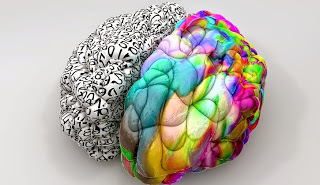How to Learn & Teach Critical Thinking More Effectively
 Critical thinking has been described as "reasonable reflective thinking focused on deciding what to believe or do." It has also been described as "thinking about thinking." It has been described in more detail as "the intellectually disciplined process of actively and skillfully conceptualizing, applying, analyzing, synthesizing, or evaluating information gathered from, or generated by, observation, experience, reflection, reasoning, or communication, as a guide to belief and action.”
Critical thinking has been described as "reasonable reflective thinking focused on deciding what to believe or do." It has also been described as "thinking about thinking." It has been described in more detail as "the intellectually disciplined process of actively and skillfully conceptualizing, applying, analyzing, synthesizing, or evaluating information gathered from, or generated by, observation, experience, reflection, reasoning, or communication, as a guide to belief and action.”
The best way to learn critical thinking is to understand the information or situation through analysis and reflection. Then make the best decision that will result in the best long-term outcome, which requires an unbiased critical thinking process. Clarifying one's own thinking and making it visible along with relevant judgments is a powerful way to share and involve others. People may have different values and different judgments based on different information. These facts make it possible to have a rich interaction and more accurate conclusion. Critical thinking also has been described as "the process of purposeful, self-regulatory judgment, which uses reasoned consideration to evidence, context, conceptualizations, methods, and criteria." Within the critical social theory philosophical frame, critical thinking is commonly understood to involve commitment to the social and political practice of participatory democracy, willingness to imagine or remain open to considering alternative perspectives, willingness to integrate new or revised perspectives into the ways of thinking and acting, and willingness to foster criticality in others.
All learning is disturbance, and learning critical thinking is doubly so. Hence a good way to learn, may be to become more aware of the active and persistent nature of this kind of thinking through looking at what argument is about and how to evaluate it. Learning critical thinking is also about un-learning bad thinking habits and mistakes in reasoning. If you are referring to the ability to make judgments and to see the big picture, it is true that some people do this naturally. In fact, these people were the subjects of a study whose purpose was to learn the process these talented people used. Once defined that process can be taught to others or taught even to the original sample with significant improvements in results. The whole effort can progress toward deeper understanding. Critical thinking requires: Starting with a mentally neutral position; no biases or emotional quandary Realize the objectives Understand the outcomes based on the facts alone Apply experience or logically inherent or learned qualities Satisfied the outcomes with a high probability through deductive reasoning Conclude with a result which actualizes the objectives
From management perspective, the best way to learn critical thinking is simply to listen to your workforce. Ensure that everyone in the company feels valued. Encourage people to raise any issues. If people feel confident to discuss matters within the company, then any problems can be dealt with before they become serious, Also, Everyone will feel like they are contributing to the growth of the company. Critical thinking requires an ability to be able to not only ask the right questions, but rather absorb information forecast potentials; risks/benefits; mitigations and compare and contrast options, facts, idea against logic and creativity. Getting input from a broad range of personalities and people on the particular matter. Stop and think both in macro and micro way, and try to tie interdependencies into the mix and believe, to your core, you still missing "something." It's then that any critical thinking will be able to help drive improvement, create new ideas or solutions and make them stick or successfully. Critical thinking is essential for making decisions based on careful and comprehensive analysis, while creative thinking "creates" possibilities. In other words, critical narrows and creative expands. Engaging and believing, is the door to critical thinking. Maslow’s hierarchy and Bloom's taxonomy, and the many others are and should be irrelevant to what the individual can tap in naturally. The same way Maslow, Bloom and the many others did. Just a simple critical thought.
The ability to learn is qualitative. The capacity for being taught is quantitative. The critical thinking teaching has evolved to include these elements: Self-assessment, a systematic process that follows a logical path, step by step modeling of the process, practice on case studies, key point tests with feedback, application to participants own issues, coaching from an expert. This has proven to move people from learner to expert quickly and reliably. “The ability to think critically, as conceived in this volume, involves three things: (1) an attitude of being disposed to consider in a thoughtful way the problems and subjects that come within the range of one's experiences, (2) knowledge of the methods of logical inquiry and reasoning, and (3) some skill in applying those methods. Critical thinking calls for a persistent effort to examine any belief or supposed form of knowledge in the light of the evidence that supports it and the further conclusions to which it tends. It also generally requires ability to recognize problems, to find workable means for meeting those problems, to gather and marshal pertinent information, to recognize unstated assumptions and values, to comprehend and use language with accuracy, clarity, and discrimination, to interpret data, to appraise evidence and evaluate arguments, to recognize the existence (or non-existence) of logical relationships between propositions, to draw warranted conclusions and generalizations, to put to test the conclusions and generalizations at which one arrives, to reconstruct one's patterns of beliefs on the basis of wider experience, and to render accurate judgments about specific things and qualities in everyday life. (Edward Glaser).
 There is only a very small fractions of true critical thinkers. Critical thinking needs to combine different thinking processes, to gather a mass of information, break it apart and reconstructed with a level of accuracy projecting futuristic events, numbers, etc., and it’s complex. Thinking differently, or thinking out of the box (that people create), is breaking the rules that has been created through experience. So experience is inside the box. critical thinkers lives out of the box. Too much of what passes for critical thinking in education, philosophy, and business is not generalizable, and therefore not able to be transferred from situation to situation. It requires experience and many failures, but even more important is that we learn from the failures, failures are excellent resources for building knowledge as long as you think through the mistakes and try to develop a new paradigm for avoiding taking the bait in the future. Critical thinking is an important thinking capability for business leaders and professionals to surviving and thriving in “VUCA” digital dynamic today.Follow us at: @Pearl_Zhu
There is only a very small fractions of true critical thinkers. Critical thinking needs to combine different thinking processes, to gather a mass of information, break it apart and reconstructed with a level of accuracy projecting futuristic events, numbers, etc., and it’s complex. Thinking differently, or thinking out of the box (that people create), is breaking the rules that has been created through experience. So experience is inside the box. critical thinkers lives out of the box. Too much of what passes for critical thinking in education, philosophy, and business is not generalizable, and therefore not able to be transferred from situation to situation. It requires experience and many failures, but even more important is that we learn from the failures, failures are excellent resources for building knowledge as long as you think through the mistakes and try to develop a new paradigm for avoiding taking the bait in the future. Critical thinking is an important thinking capability for business leaders and professionals to surviving and thriving in “VUCA” digital dynamic today.Follow us at: @Pearl_Zhu
Published on May 24, 2015 23:53
No comments have been added yet.



